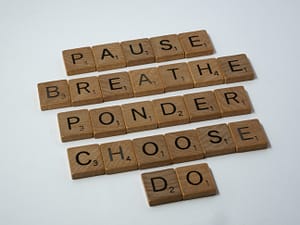[grwebform url=”https://app.getresponse.com/view_webform_v2.js?u=wfNAY&webforms_id=57753701″ css=”on” center=”off” center_margin=”200″/]
Visit our Etsy Store for Stress Wellness Resources! https://www.etsy.com/ca/shop/BeBestuWellnessDepot
Panic attacks and anxiety disorders are quite frequent in today’s society, affecting millions of people all over the world. It is a powerful and terrible sensation that can disable the afflicted for long periods of time. Effective panic attack treatment is sought by those millions of people.
The physiologic overreaction is known as the fight/flight/freeze response. It has no lasting physical effect on you. You must ‘surf the wave’ of powerful feeling once the adrenaline/epinephrine has been unleashed. It is critical to attempt to remain cool when dealing with a panic attack. As a result, you’ll be able to keep the intensity of your emotions from going too high, which could lead to hyperventilation.
Panic Attack Treatment
If you apply soothing strategies, those powerful initial feelings will fade. Allow yourself to be unconcerned about what others are thinking. Distract oneself without freezing or fleeing. You can avoid the freeze response if you can participate in active coping. You offer your brain an opportunity to learn that this circumstance isn’t that bad after all if you stick it out. Slowly and deeply inhale. Excess adrenaline/epinephrine should be burned off by pacing or exercising. (1) Relax your muscles to make the experience go faster.
“I’m experiencing a panic attack,” tell yourself, but don’t worry since it will pass.
Repeating affirmations can help to de-escalate the intensity of a situation.
 This website has a few of them that are quite handy (2)
This website has a few of them that are quite handy (2)
The site’s name, No Panic, strikes me as a coincidence because I know someone who used to suffer from panic attacks. He had the Hebrew words No Panic tattooed on his arm. That way, no one else would know what it said, but he would. When he felt a panic attack coming on, he would stare at his tattoo and repeat “No panic, No panic” over and over. He discovered that this was a very effective method for stopping panic episodes in their tracks.
STOPP is an acronym for Stop, Look, and Prevent (3)

S – Take a deep breath and slow it down. This sends a strong signal to the neurological system to relax.
T – Step back into the part of yourself that can see what’s going on.
O – Observe and scale — on a scale of 1-10, how scared am I? Using numbers stimulates your thinking brain.
P – Point of View – Is there another way to look at this?
P — Positive thinking or action – which do I require at this time? Self-kindness? Distraction?
Every time you overcome an anxiety-provoking situation, your brain has the opportunity to learn and remodel its response.
The Grounding Strategy (5,4,3,2,1) (4)
Find:
Five items that you can view.
Four things you can hear.
Three things you can touch.
Two things you can smell:
One emotion you’re experiencing – ask yourself, “Do I feel more at ease?” Is it necessary for me to repeat each step?”
Other approaches to consider for panic attack treatment are:

Caffeine and alcohol should be avoided.
Something relatively intense that you will continue to do.
Build up to 12 minutes of meditation per day – this rewires your brain to be more peaceful.
Do breathing exercises three times a day for a total of five minutes.
Set aside some time to unwind completely.
Take some time to do things that will help you cope with stress. Singing, cold water exposure, singing, tai chi, and yoga are among them. Spend time in green settings – every day, spend at least 20 minutes outside.
Keep in mind that your thoughts are simply that: thoughts.
Every day, we experience hundreds of thoughts; understanding the distinction between thoughts and actual occurrences is critical for anxiety management. Having a thought does not make it real, does not imply that anything will occur, and does not imply that we must act on it.
We have a habit of conflating our thoughts with reality. It may be beneficial to begin observing when your ideas cause anxiety. ‘If I go to the party, no one will talk to me,’ for example, or ‘If I say no, people will stop liking me.’
Because the brain reacts to those thoughts as if they were real (5), you can minimize your worry by recognizing when you’re having them and devoting less energy to them. To interrupt them, use the ‘Stopp’ approach, or simply watch them pass by and wait for the next thought, similar to watching a cloud pass by. Allow them to go rather than trying to stop them – after all, they’ve already arrived. However, the less time you spend with them, the faster they will pass.
Examining your thoughts more deeply can sometimes be beneficial.

To begin, recognize that this is a thought. For example, change the phrase “I cannot stand to have another panic attack” to “I am having the idea that I cannot bear to have another panic attack.”
Is this correct? What evidence do I have?
What evidence backs up this assertion?
What do you think other individuals I respect think?
How do I feel when I think about this?
What do you think a plausible alternate thought would be? Is this a coping mechanism?
‘I can’t stand this!’ changed to ‘This isn’t the end of the world – I’ll survive, I’ll make it through’.
What does the alternative make me think about?
Learning to worry properly may seem counterintuitive, yet it can be extremely beneficial in preventing anxiety and panic episodes. (6)
It can be really beneficial to be able to predict when things will go awry. Expecting a river to flood and imperil your family and house, for example, led to individuals fleeing to another town and living to tell the tale. It is, however, only beneficial to us if it leads to planning and subsequently action. The constant fear of things going wrong might keep us trapped in bad emotions. Here’s a strategy for transitioning from concern to planning…and peace.
Do Not Be Concerned

Sort them into two lists as you write them down: ‘things I can do something about’ and ‘things I can’t’. Any item on the first list must be accompanied with a planned action. Make a note of it in your calendar. Consider who you might be able to delegate tasks to and what kind of assistance you might require.
You should have some action items in your diary as well as a list that you no longer need. This is the part where the magic happens. Toss out the list! Then take a few deep breaths.
Now that you’ve done everything you can, it’s time to RELAX. Any additional anxiety can be postponed until tomorrow.
Take a few seconds to write down three good things you’re thankful for today, things you’re delighted to observe, tiny victories, and indicators of progress.
The Fear Staircase (7)
When you avoid a scenario because of worry, you’re telling your brain that it’s harmful. When you expose yourself to scenarios that make you feel worried, your brain has an opportunity to learn that you aren’t in danger, and such events won’t trigger the same response in the future. Unfortunately, in order for it to learn, it must be triggered, which means you must be willing to be uncomfortable. Making a fear ladder and starting at the bottom rung is one method to tackle this gradually…
Consider a challenging task that you usually avoid, such as driving your car.

Consider 5–10 little actions that could help you get closer to your goals, and rank them from simplest to most difficult. On the bottom rung of the ladder is the simplest.
Continuing with the same example, 1. Get in my car, 2. Start the engine, 3. Drive around the block, 4. Drive to a local beauty site for a walk, 5. Drive to the next town with my friend, and so on, until you can do the thing that makes you nervous.
Begin at the bottom of the stairwell. Remember that anxiety is unpleasant, but it is not harmful. Take a breather and congratulate yourself on each step up. Don’t worry about adding more steps; simply keep climbing.
Remember that confronting phobias is difficult,
but you can make it easier on yourself.

When challenging yourself, avoid utilizing safety seeking behaviors that may limit your results, such as going to the same spot every time, going with the same person every time, or wearing sunglasses. Increase your tolerance for anxiety’s bodily effects by doing things like breathing quicker or exercising vigorously.
To Sum Up
In conclusion, there are many ways to control panic attacks. The most important thing is to be proactive and understand your own triggers. Once you know what sets off your panic attacks, you can take steps to avoid them or deal with them when they happen. Additionally, there are some helpful techniques that can be used when a panic attack begins, such as deep breathing and visualization. Finally, it is important to have a support system in place, whether that is friends or family members or a therapist.
If you are struggling with panic attacks, please seek professional help. There is no shame in admitting that you need help, and there are many treatments available that can help you get your life back on track.
I hope that you have found this overview of Effective Anxiety and Panic Attack Treatment to be helpful and you will be encouraged to put some of it’s tactics into practice. All the best!
Don’t forget to visit our Esty Store for Wellness Resources, especially to Relieve Stress!
https://www.etsy.com/ca/shop/BeBestuWellnessDepot
[grwebform url=”https://app.getresponse.com/view_webform_v2.js?u=wfNAY&webforms_id=57753701″ css=”on” center=”off” center_margin=”200″/]
References
- Burning Up Anxiety https://www.polk.edu/wp-content/uploads/Burning-Up-Anxiety.pdf
- Positive Affirmations https://nopanic.org.uk/positive-affirmations/
- STOPP https://www.hey.nhs.uk/wp/wp-content/uploads/2020/08/OHC_STOPP.pdf
- 5-4-3-2-1 Coping Technique for Anxiety https://www.urmc.rochester.edu/behavioral-health-partners/bhp-blog/april-2018/5-4-3-2-1-coping-technique-for-anxiety.aspx
- Your brain on imagination: It’s a lot like reality, study shows https://www.sciencedaily.com/releases/2018/12/181210144943.htm
- How to Worry More Effectively https://psychcentral.com/blog/how-to-worry-more-effectively#1
- Fear Ladder Building: Getting Started https://anxietycoach.mayoclinic.org/anxiety/building-a-fear-ladder/

